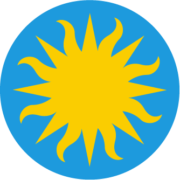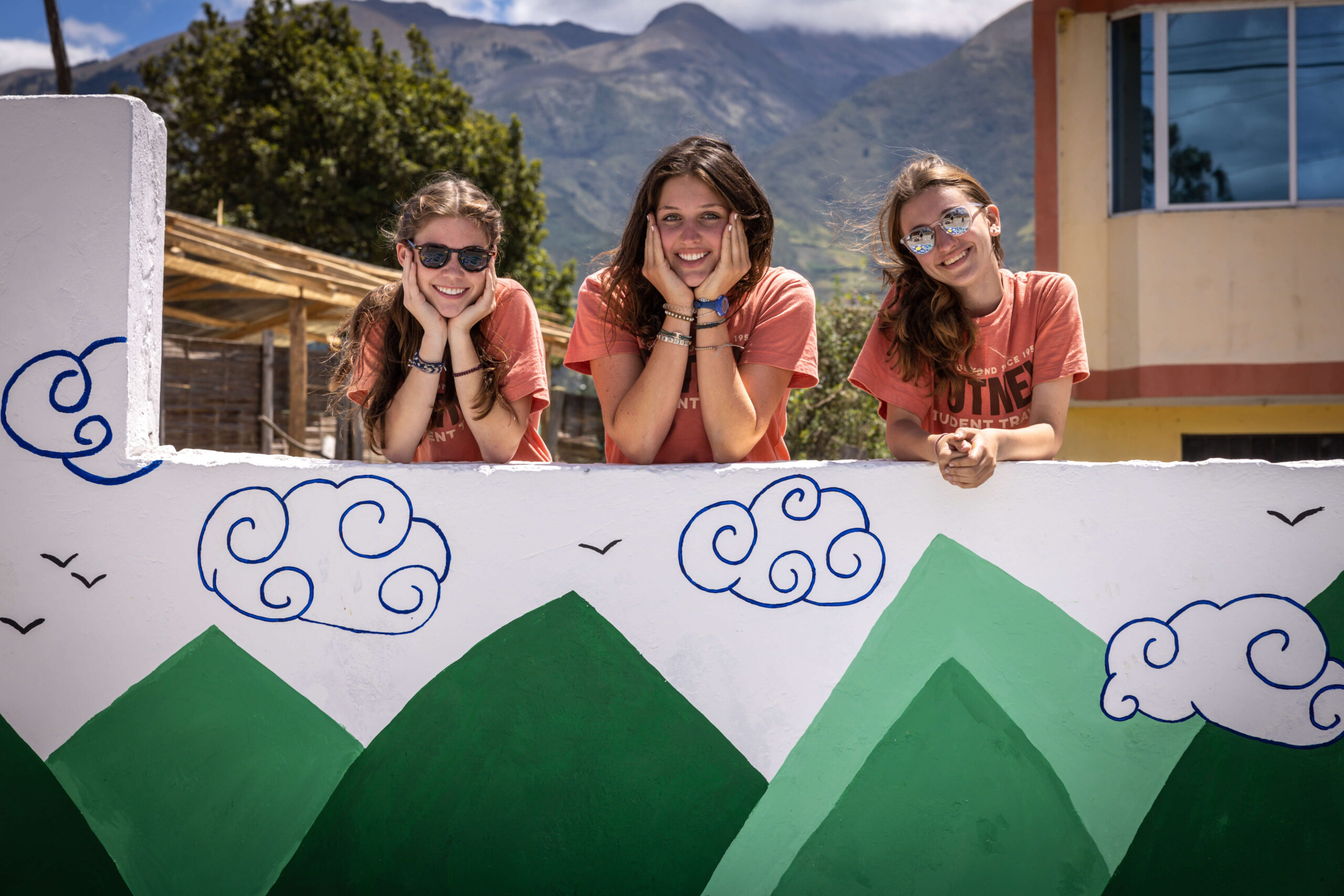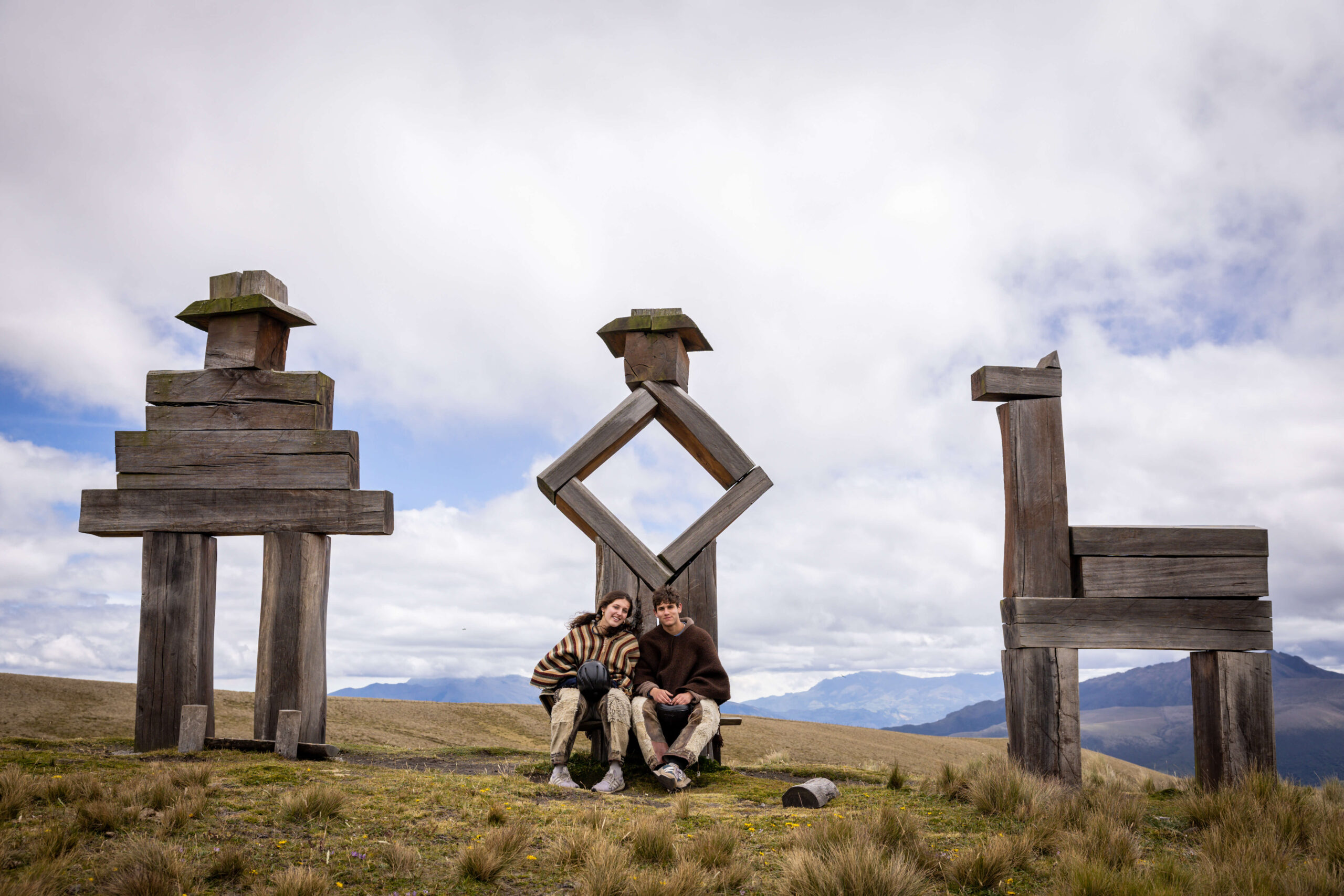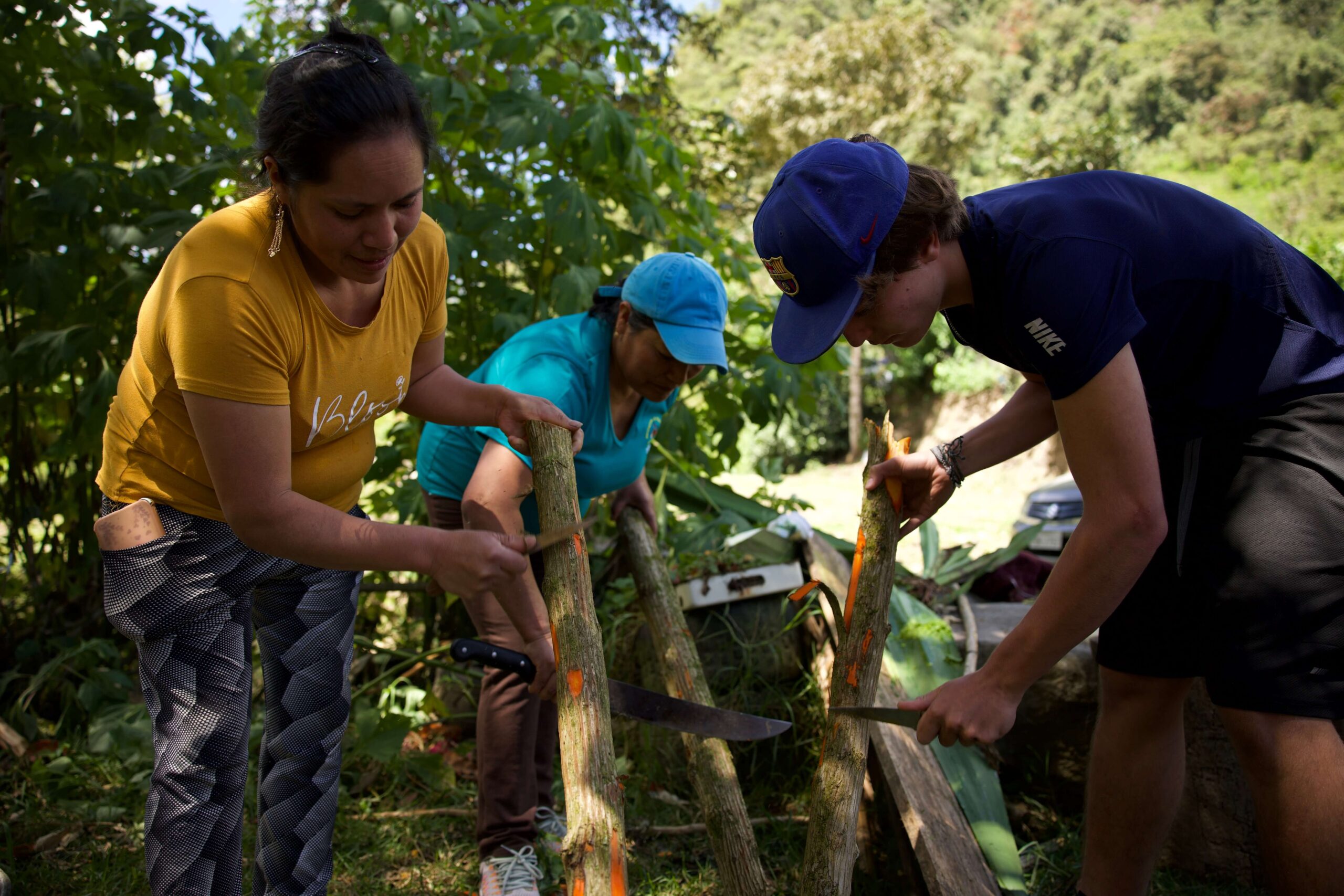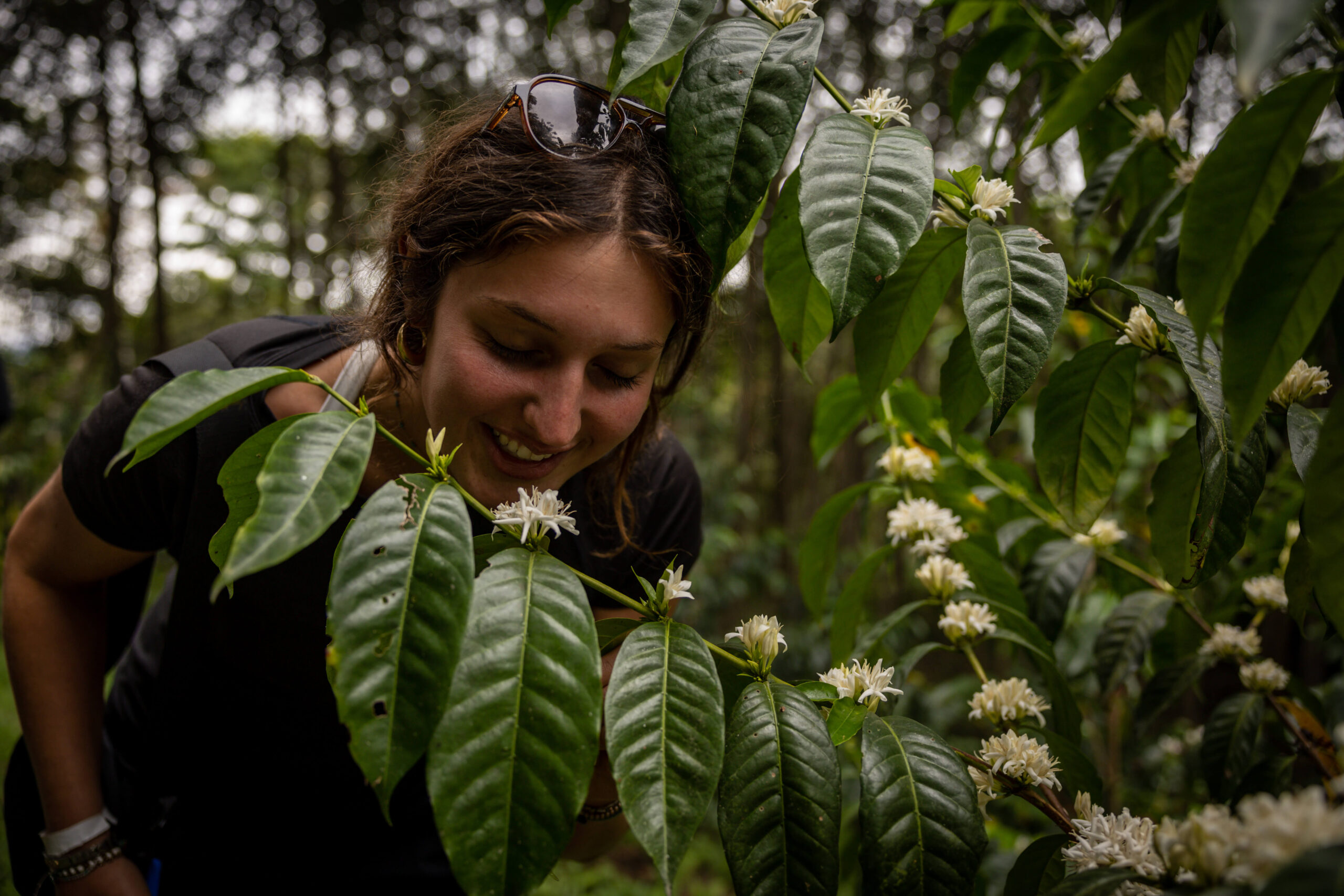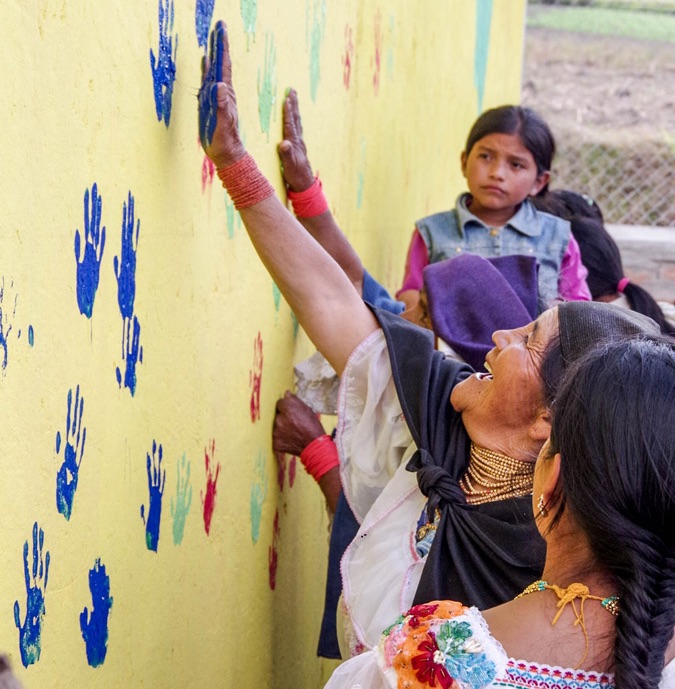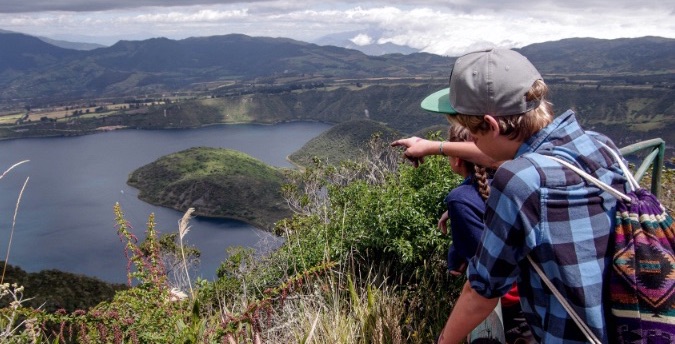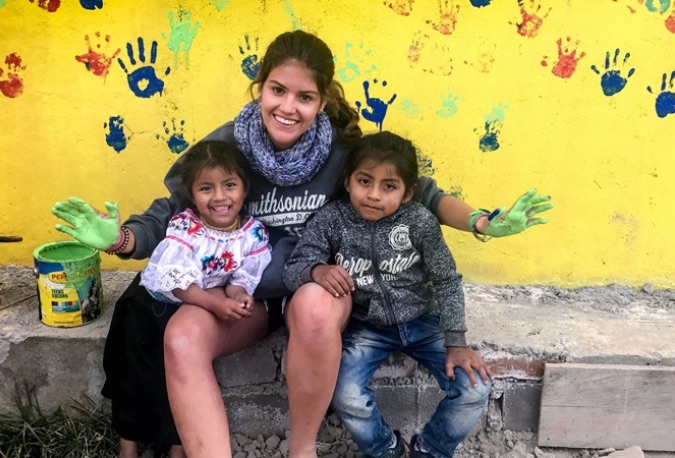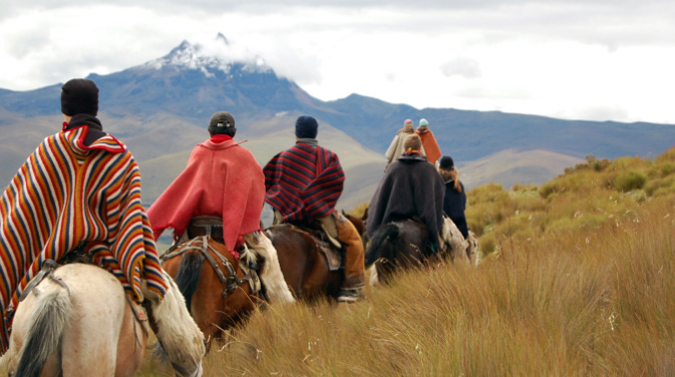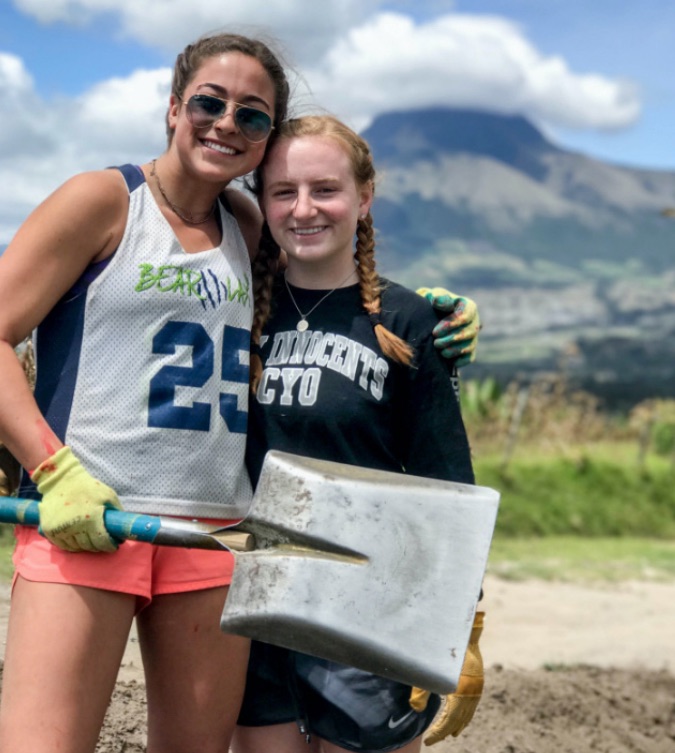Ecuador & the Galápagos
Highlands, Kichwa Culture, & Island Biodiversity
Live in Ecuador’s Andean highlands on this summer service program. During your student travel program in Ecuador, join members of a local Kichwa community in meaningful service projects—lend a hand with light construction work, participate in water access initiatives, or help with the local harvest. Then, explore the otherworldly landscapes and extraordinary wildlife of the Galápagos Islands, home to giant tortoises, lava tunnels, equatorial penguins, marine iguanas, and blue-footed boobies.
- Highlights
• Ride horseback at the base of Cotopaxi Volcano
• Join local contacts during the annual Inti Raymi celebration
• Snorkel with sea lions in a sheltered Galápagos bay
Itinerary
This itinerary represents our best projection of the group’s schedule. However, we may implement changes designed to improve the quality of the program.
Meet your fellow high school student travelers and one or more of your leaders in Miami and fly together to Quito, Ecuador. To learn more about how we organize travel, click here.
Spend the first days of this summer program exploring Ecuador’s capital city, Quito. Get to know your leaders and fellow students, take a guided walk around the Old City, ride the teleférico up the Pichincha Volcano, savor rich Ecuadorian coffee in an outdoor café, and participate in an in-depth program orientation.
Travel by bus to our host community, home to about 500–1,000 people, located in the central Andean highlands north of Quito. Experience local culture and everyday life as you work with local contacts to complete several community-determined volunteer projects. Lend a hand constructing a community center, harvest crops, or organize a summer camp for local children. In the afternoons and evenings, play pick-up soccer with Ecuadorian friends, practice your Spanish, hike into the hills surrounding your community, or take part in an Inti Raymi celebration. Take a day trip to the nearby town of Otavalo and explore the renowned outdoor market featuring embroidered textiles, handwoven alpaca blankets, art, jewelry, and more.
During your time in the community, take an overnight excursion to explore the surrounding area. Hike around the rim of Laguna de Cuicocha, a crater lake with spiritual significance to the Kichwa people. Hike to a mirador to spot some of Ecuador’s 1,500 bird species, soak in geothermal hot springs, and visit a coffee farm to learn about coffee production from bean to cup.
After saying goodbye to your host community, visit snowcapped Cotopaxi, one of the world’s largest volcanoes. Stay at a cozy Andean hacienda, hike to the mountain refugio on Cotopaxi Volcano for breathtaking views, and ride horseback across the surrounding Andean páramo. At night, savor traditional meals and tell stories by the fireplace with chagra guides.
Return to Quito for one night before a morning flight to the Galápagos Islands.
Fly from Quito and arrive on the island of Santa Cruz. Visit the Charles Darwin Research Station, formerly the home of one of the Galápagos’ most famous residents, a 100-year-old tortoise named Diego, who helped repopulate an entire species of giant tortoises. Meet tortoises and rarely seen land iguanas, and talk with scientists to learn what they are doing to reintroduce them into the wild. Go for a hike in the highlands and check out the cavernous lava tubes. Head to Tortuga Bay, a stunning beach with fine white sand to see marine iguanas.
Next, board a boat bound for San Cristóbal. Visit the Interpretation Center on San Cristóbal for an introduction to the biology, geology, and history of human impact on the islands. Then, jump on bikes and ride from the main harbor to Lobería to swim with a lively colony of sea lions. Snorkel through the passage of Kicker Rock, the remains of an underwater volcano, and spot manta rays, sea turtles, harmless Galápagos sharks, and an impressive array of colorful tropical fish.
Fly with the group from the Galápagos to Quito for a final evening at our airport guesthouse. The next morning, fly from Quito to Miami with your group and a leader, then continue on to your final destination. To learn more about how we organize travel, click here.
Itinerary
This itinerary represents our best projection of the group’s schedule. However, we may implement changes designed to improve the quality of the program.
Meet your fellow high school student travelers and one or more of your leaders in Miami and fly together to Quito, Ecuador. To learn more about how we organize travel, click here.
Spend the first days of this summer program exploring Ecuador’s capital city, Quito. Get to know your leaders and fellow students, take a guided walk around the Old City, ride the teleférico up the Pichincha Volcano, savor rich Ecuadorian coffee in an outdoor café, and participate in an in-depth program orientation.
Travel by bus to our host community, home to about 500–1,000 people, located in the central Andean highlands north of Quito. Experience local culture and everyday life as you work with local contacts to complete several community-determined volunteer projects. Lend a hand constructing a community center, harvest crops, or organize a summer camp for local children. In the afternoons and evenings, play pick-up soccer with Ecuadorian friends, practice your Spanish, hike into the hills surrounding your community, or take part in an Inti Raymi celebration. Take a day trip to the nearby town of Otavalo and explore the renowned outdoor market featuring embroidered textiles, handwoven alpaca blankets, art, jewelry, and more.
During your time in the community, take an overnight excursion to explore the surrounding area. Hike around the rim of Laguna de Cuicocha, a crater lake with spiritual significance to the Kichwa people. Hike to a mirador to spot some of Ecuador’s 1,500 bird species, soak in geothermal hot springs, and visit a coffee farm to learn about coffee production from bean to cup.
After saying goodbye to your host community, visit snowcapped Cotopaxi, one of the world’s largest volcanoes. Stay at a cozy Andean hacienda, hike to the mountain refugio on Cotopaxi Volcano for breathtaking views, and ride horseback across the surrounding Andean páramo. At night, savor traditional meals and tell stories by the fireplace with chagra guides.
Return to Quito for one night before a morning flight to the Galápagos Islands.
Fly from Quito and arrive on the island of Santa Cruz. Visit the Charles Darwin Research Station, formerly the home of one of the Galápagos’ most famous residents, a 100-year-old tortoise named Diego, who helped repopulate an entire species of giant tortoises. Meet tortoises and rarely seen land iguanas, and talk with scientists to learn what they are doing to reintroduce them into the wild. Go for a hike in the highlands and check out the cavernous lava tubes. Head to Tortuga Bay, a stunning beach with fine white sand to see marine iguanas.
Next, board a boat bound for San Cristóbal. Visit the Interpretation Center on San Cristóbal for an introduction to the biology, geology, and history of human impact on the islands. Then, jump on bikes and ride from the main harbor to Lobería to swim with a lively colony of sea lions. Snorkel through the passage of Kicker Rock, the remains of an underwater volcano, and spot manta rays, sea turtles, harmless Galápagos sharks, and an impressive array of colorful tropical fish.
Fly with the group from the Galápagos to Quito for a final evening at our airport guesthouse. The next morning, fly from Quito to Miami with your group and a leader, then continue on to your final destination. To learn more about how we organize travel, click here.
Ecuador is widely considered one of the most biodiverse countries in the world. The Galápagos archipelago, a UNESCO World Heritage site, boasts unparalleled diversity in endemic species and is one of the world’s most unique biological environments. On the mainland, snow-covered peaks of the Andean highlands descend into lush Amazon rainforests. Ecuadorian culture is as diverse as the country’s landscapes, from ranching communities in the Andean páramo to agropasotoralists in the cloud forest, urban businesses to fishing villages on the coast. Kichwa is the largest indigenous population in the country, and in much of South America. With regional variations, Kichwa language and traditions are an integral part of Ecuadorian communities across the country.
Spanish is Ecuador’s official language and ten Indigenous languages are also spoken throughout the country. Kichwa is the most widely spoken Indigenous language in Ecuador.
Summer temperatures in Ecuador are moderate, reaching 60–70°F (16-21°C) when the sun is out, and cooling off substantially at night. Although the Galápagos Islands are located on the Equator, the cool Humboldt Current makes the ocean water quite chilly year round.
Ecuador is known for its variety of fruits and fresh juices, plantains, seemingly endless culinary permutations of the potato and other root vegetables, delicious seafood, hearty meals of rice and other grains, and flavorful soups. Seafood is a popular staple on the Galápagos Islands.
Ecuador is widely considered one of the most biodiverse countries in the world. The Galápagos archipelago, a UNESCO World Heritage site, boasts unparalleled diversity in endemic species and is one of the world’s most unique biological environments. On the mainland, snow-covered peaks of the Andean highlands descend into lush Amazon rainforests. Ecuadorian culture is as diverse as the country’s landscapes, from ranching communities in the Andean páramo to agropasotoralists in the cloud forest, urban businesses to fishing villages on the coast. Kichwa is the largest indigenous population in the country, and in much of South America. With regional variations, Kichwa language and traditions are an integral part of Ecuadorian communities across the country.
Spanish is Ecuador’s official language and ten Indigenous languages are also spoken throughout the country. Kichwa is the most widely spoken Indigenous language in Ecuador.
Summer temperatures in Ecuador are moderate, reaching 60–70°F (16-21°C) when the sun is out, and cooling off substantially at night. Although the Galápagos Islands are located on the Equator, the cool Humboldt Current makes the ocean water quite chilly year round.
Ecuador is known for its variety of fruits and fresh juices, plantains, seemingly endless culinary permutations of the potato and other root vegetables, delicious seafood, hearty meals of rice and other grains, and flavorful soups. Seafood is a popular staple on the Galápagos Islands.
What to Expect
Review specific program expectations here. For more general information:
During your travels in Ecuador, you can expect to participate in several different service experiences—construction projects such as mixing cement and laying blocks for a community building, environmental projects like water access initiatives or shadowing local farmers, and educational projects such as leading activities in English with local children. The focus of this summer abroad program in Ecuador is learning about another culture by forming meaningful relationships with local people and undertaking a shared service experience together. You should come to the summer with an open mind, eager to participate in new experiences and interested in exploring another culture and way of life. All students participate in each of the group’s projects on a rotating basis, and everyone lends a hand in meal preparation and cleanup. To learn more about our Service programs click here.
Choose an independent project and pursue an aspect of Ecuadorian culture of particular interest to you—learn to make empanadas with a local family, try milking a cow, learn a traditional dance, or organize an opportunity for you and your friends to lend a hand in reforestation efforts.
Proficiency in Spanish is not required; however, students who study Spanish in school will have opportunities to practice while communicating with local people. Students who do not speak the local language will have the opportunity to learn some basic language skills. On this program you will also have the opportunity to practice Kichwa, the indigenous language of this region.
To encourage full engagement and immersion in the Putney travel experience, we limit the use of cell phones and other devices on our High School programs. Students are allowed to use their phones in transit to the program, and keep their devices throughout. During in-country orientation, leaders will lock phones with a code, unlocking them for the second half of the program. During the tech-free portion of the program, students have the opportunity for a weekly call home according to a pre-arranged schedule. For more details, please see our FAQ.
This is a very active summer travel program. The service work, as well as activities and excursions, can be strenuous, and you can expect to spend most of each day outside. You can expect to work on projects, play soccer, hike, horseback ride, swim, kayak, bike, and snorkel. You do not need to be at peak fitness to participate, but it is important that you have a desire to be physically active, and that you are excited about trying all activities.
This program visits high altitude destinations—Quito and the region around our host community (~9,000 feet/2,743 meters), our hacienda in Cotopaxi National Park (11,800 feet/3,597 meters), and a hike to the base camp of Cotopaxi Volcano (15,750+ feet/4,800+ meters).
Living accommodations in Ecuador are very simple. The group lives in a community building, or albergue—we use sleeping bags and sleeping pads on the floor with simple bathrooms, running water, flushing toilets, and a shower. During overnight excursions and in the Galápagos, we stay in simple ecolodges, bungalows, and family-run inns where students sleep in beds, have hot showers, and share a room with other students in your group. Leaders reside together with the students throughout the program.
In the host community, we eat delicious home-cooked meals prepared by local cooks. Each day several students from the group form cooking crews and help the cooks prepare meals. Students learn about shopping at the market and preparing Ecuadorian food. During excursions and in the Galápagos, the group eats most meals in restaurants and occasionally visits markets to shop for a picnic lunch.
What to Expect
Review specific program expectations here. For more general information:
During your travels in Ecuador, you can expect to participate in several different service experiences—construction projects such as mixing cement and laying blocks for a community building, environmental projects like water access initiatives or shadowing local farmers, and educational projects such as leading activities in English with local children. The focus of this summer abroad program in Ecuador is learning about another culture by forming meaningful relationships with local people and undertaking a shared service experience together. You should come to the summer with an open mind, eager to participate in new experiences and interested in exploring another culture and way of life. All students participate in each of the group’s projects on a rotating basis, and everyone lends a hand in meal preparation and cleanup. To learn more about our Service programs click here.
Choose an independent project and pursue an aspect of Ecuadorian culture of particular interest to you—learn to make empanadas with a local family, try milking a cow, learn a traditional dance, or organize an opportunity for you and your friends to lend a hand in reforestation efforts.
Proficiency in Spanish is not required; however, students who study Spanish in school will have opportunities to practice while communicating with local people. Students who do not speak the local language will have the opportunity to learn some basic language skills. On this program you will also have the opportunity to practice Kichwa, the indigenous language of this region.
To encourage full engagement and immersion in the Putney travel experience, we limit the use of cell phones and other devices on our High School programs. Students are allowed to use their phones in transit to the program, and keep their devices throughout. During in-country orientation, leaders will lock phones with a code, unlocking them for the second half of the program. During the tech-free portion of the program, students have the opportunity for a weekly call home according to a pre-arranged schedule. For more details, please see our FAQ.
This is a very active summer travel program. The service work, as well as activities and excursions, can be strenuous, and you can expect to spend most of each day outside. You can expect to work on projects, play soccer, hike, horseback ride, swim, kayak, bike, and snorkel. You do not need to be at peak fitness to participate, but it is important that you have a desire to be physically active, and that you are excited about trying all activities.
This program visits high altitude destinations—Quito and the region around our host community (~9,000 feet/2,743 meters), our hacienda in Cotopaxi National Park (11,800 feet/3,597 meters), and a hike to the base camp of Cotopaxi Volcano (15,750+ feet/4,800+ meters).
Living accommodations in Ecuador are very simple. The group lives in a community building, or albergue—we use sleeping bags and sleeping pads on the floor with simple bathrooms, running water, flushing toilets, and a shower. During overnight excursions and in the Galápagos, we stay in simple ecolodges, bungalows, and family-run inns where students sleep in beds, have hot showers, and share a room with other students in your group. Leaders reside together with the students throughout the program.
In the host community, we eat delicious home-cooked meals prepared by local cooks. Each day several students from the group form cooking crews and help the cooks prepare meals. Students learn about shopping at the market and preparing Ecuadorian food. During excursions and in the Galápagos, the group eats most meals in restaurants and occasionally visits markets to shop for a picnic lunch.
A Day in the Life: Host Community
- Morning
- Afternoon
- Evening
A Day in the Life:
Host Community
- Morning
- Afternoon
- Evening
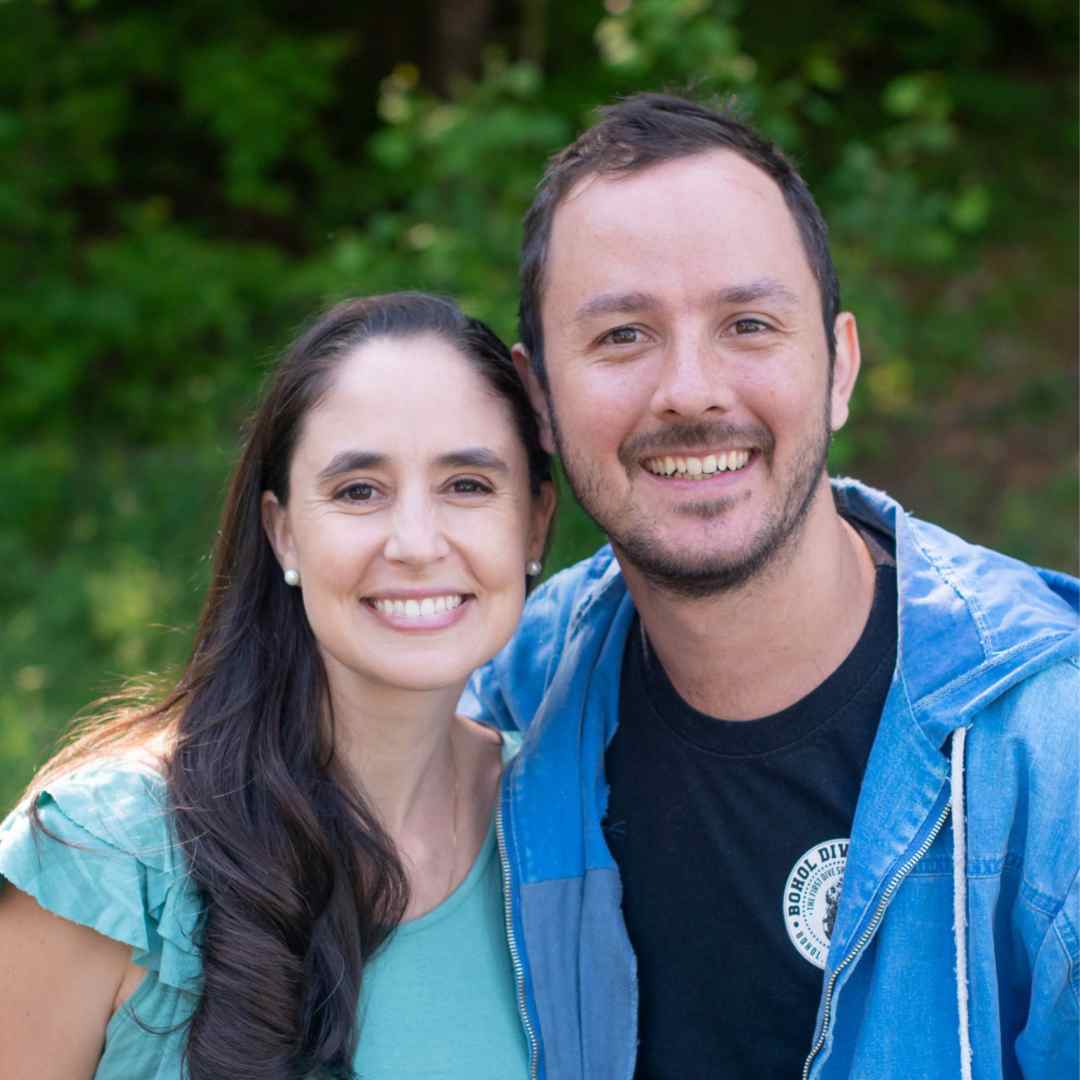
Program Directed by
If you have questions or would like to talk further about this program, please get in touch!

